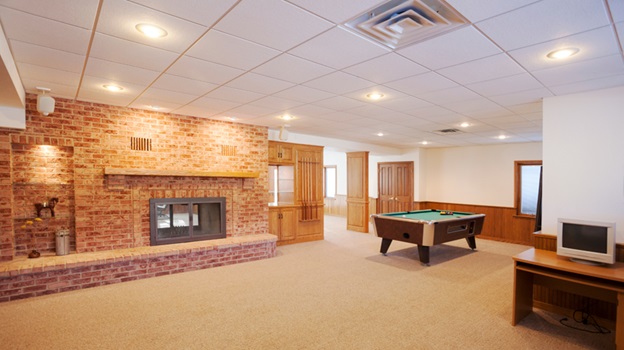Basements are often the darkest parts of the home, and without proper lighting, even the most beautifully renovated basement can feel closed off, uninviting, or unfinished. Fortunately, with the right combination of lighting techniques, you can transform your lower level into a warm, welcoming space that feels just as bright and functional as the rest of your home.
Whether you’re using your basement as a family room, home office, gym, or guest suite, good lighting is essential for comfort and usability. Here are several smart lighting ideas to help brighten up your basement and make the most of your space.
1. Start with Layered Lighting
The key to any well-lit space is using layers of light: ambient, task, and accent lighting. Each serves a different purpose:
- Ambient lighting provides general illumination for the entire space.
- Task lighting focuses light where specific activities occur—like reading, working, or cooking.
- Accent lighting adds visual interest and highlights architectural features or artwork.
By combining all three, you’ll achieve balanced, functional lighting that eliminates shadows and gives your basement a more open feel.
2. Recessed Lighting for Clean, Even Illumination
Recessed ceiling lights (often called can lights or pot lights) are one of the most popular choices for basements—and for good reason. They offer even, widespread lighting without taking up headroom or visual space, which is especially helpful in lower ceilings.
To brighten your basement effectively, space recessed lights evenly throughout the ceiling. Use LED bulbs with a high lumen output and a soft white or daylight color temperature (around 3000K–5000K) to mimic natural sunlight. Dimmer switches can add versatility, allowing you to adjust brightness based on the time of day or intended use of the room.
3. Maximize Natural Light with Window Wells and Light Wells
If your basement has exterior walls, consider installing or upgrading window wells to bring in more natural light. Egress windows not only improve safety and code compliance but also allow sunlight to stream in, reducing your reliance on artificial lighting.
For walk-out basements, take advantage of glass doors or larger windows to open the space visually and increase daylight exposure. Light wells—excavated areas with reflective materials—can also be used to direct more sunlight into the room.
Even small windows can make a big difference when combined with bright wall colors and light-enhancing finishes.
4. Use Wall Sconces to Create Warmth and Depth
Wall sconces are excellent for adding ambient or accent lighting without taking up valuable floor or table space. They work well in stairwells, hallways, or alongside seating areas to create soft, flattering light that makes the space feel cozy and well-designed.
Choose sconces that direct light both upward and downward to spread illumination evenly. Pair them with dimmable LED bulbs for greater control over mood and brightness.
5. Incorporate Task Lighting for Specific Zones
In a multi-functional basement, different zones may require different lighting solutions. For example:
- Install under-cabinet lighting in a wet bar or kitchenette area.
- Use desk lamps or pendant lights in a home office or study zone.
- Add floor lamps near reading chairs or gaming setups.
These targeted light sources reduce eye strain and help define the purpose of each area within your basement.
A basement remodeling contractor can help you plan and wire task lighting into your layout to ensure optimal placement and performance.
6. Choose Reflective Finishes and Light Colors
Lighting isn’t just about the fixtures—it’s also about how the space reflects that light. Light-colored walls, ceilings, and floors help bounce illumination around the room, making it feel brighter and more spacious.
Opt for soft neutrals, light grays, or warm whites in paint and flooring. Glossy finishes on countertops, furniture, or tiles can also reflect light and enhance brightness.
Mirrors are another powerful trick—strategically placing mirrors opposite windows or light fixtures can double the light’s impact and visually expand the room.
7. Add Cove Lighting or LED Strips for Subtle Glow
For a modern touch, consider installing cove lighting or LED strip lights along ceilings, behind entertainment centers, under stair treads, or along baseboards. These indirect light sources add ambiance without glare, and they’re particularly effective in creating a cozy, upscale vibe.
LED strips come in a variety of colors and brightness levels and can even be controlled remotely or via smart home systems.
Transforming your basement into a bright, inviting space starts with thoughtful lighting design. Whether you’re working with small windows or no natural light at all, incorporating multiple layers of lighting, smart fixture placement, and reflective surfaces can completely change the atmosphere.
From recessed lights and sconces to under-cabinet task lights and ambient LED strips, there are countless ways to bring light into every corner of your basement. Collaborating with a skilled basement design contractor ensures that your lighting plan is seamlessly integrated into your overall design—enhancing both form and function for years to come.

